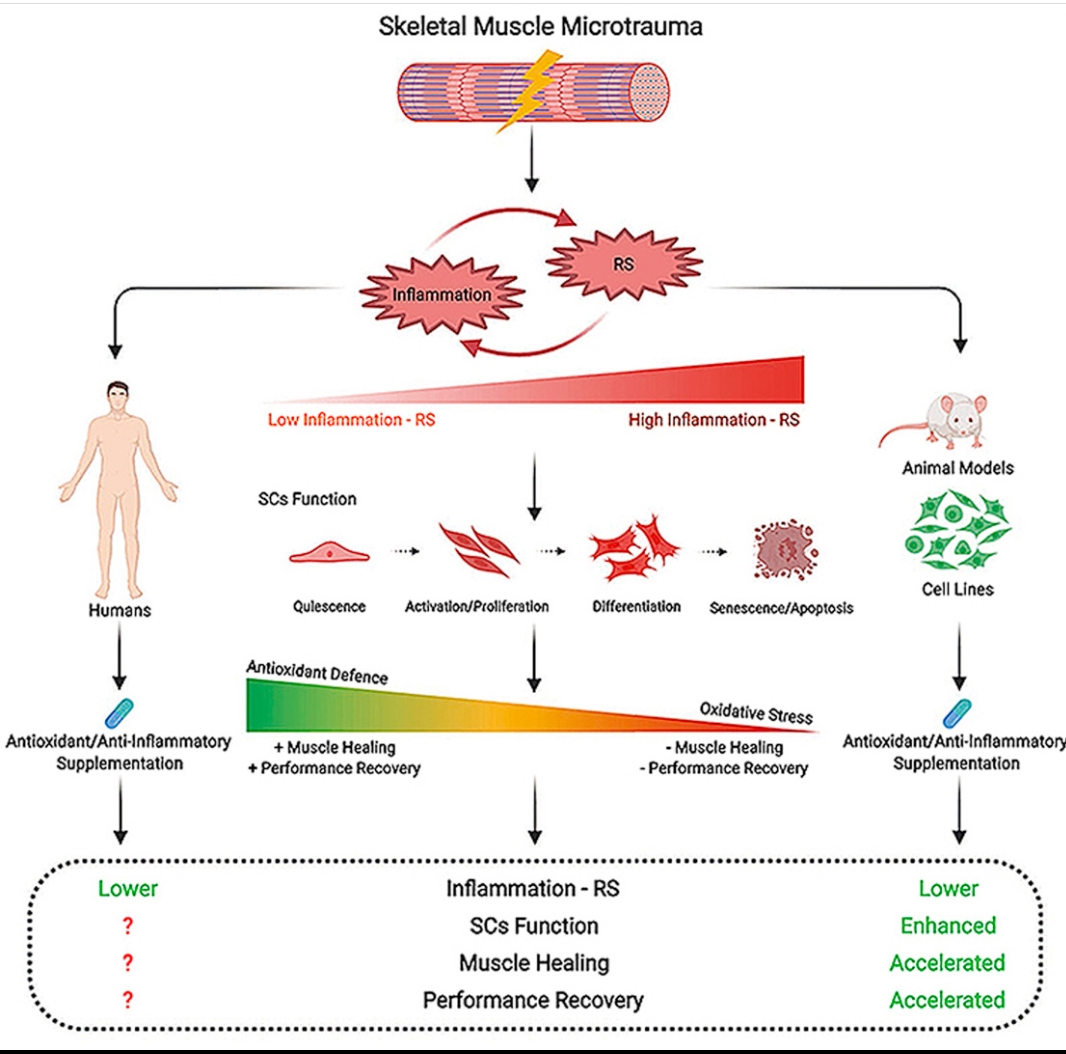Redox-dependent regulation of satellite cells following aseptic muscle trauma: Implications for sports performance and nutrition
Konstantinos Papanikolaou Free Radical Biology and Medicine Volume 161, December 2020, Pages 125-138
Highlights
• Antioxidants preserve satellite cells homeostasis and enhance their function.
• Antioxidants expedite muscle healing through up-regulated satellite cells activity.
• Improved satellite cells activity may facilitate muscle recovery.
Skeletal muscle satellite cells (SCs) are indispensable for tissue regeneration, remodeling and growth. Following myotrauma, SCs are activated, and assist in tissue repair. Exercise-induced muscle damage (EIMD) is characterized by a pronounced inflammatory response and the production of reactive oxygen species (ROS). Experimental evidence suggests that SCs kinetics (the propagation from a quiescent to an activated/proliferative state) following EIMD is redox-dependent and interconnected with changes in the SCs microenvironment (niche).
Animal studies have shown that following aseptic myotrauma, antioxidant and/or anti-inflammatory supplementation leads to an improved recovery and skeletal muscle regeneration through enhanced SCs kinetics, suggesting a redox-dependent molecular mechanism. Although evidence suggests that antioxidant/anti-inflammatory compounds may prevent performance deterioration and enhance recovery, there is lack of information regarding the redox-dependent regulation of SCs responses following EIMD in humans. In this review, SCs kinetics following aseptic myotrauma, as well as the intrinsic redox-sensitive molecular mechanisms responsible for SCs responses are discussed. The role of redox status on SCs function should be further investigated in the future with human clinical trials in an attempt to elucidate the molecular pathways responsible for muscle recovery and provide information for potential nutritional strategies aiming at performance recovery.














